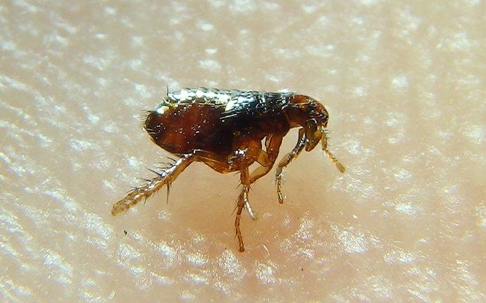Although people in the Bay Area generally associate flea problems with dogs and cats, these small, flightless parasites also feed on other warm-blooded animals, including humans. These tiny, flightless parasites attach themselves and drink their hosts’ blood and can transmit serious diseases in the process.
Pets and their owners are at higher risk for flea infestations, as are wild animals like deer and raccoons. These travelers can bring fleas along with them when they visit private and public properties.
Fleas cause a wide variety of veterinary and medical problems, including some pretty serious diseases. Besides that, they also bite and these can be irritating and painful. The skin in the affected area can become inflamed, red, and swollen, not to mention itchy. Even worse, some people and animals are allergic to these bites and develop serious reactions.
Fleas Are A Big Deal
It is widely accepted that dogs and cats will get fleas, so oftentimes the dangers of flea infestations are ignored. These insects are hard to see and are often not detected until the problem is out of control. The adults are either brown or dark red and only measure about 1/12 to 1/6 of an inch long.
Other identifying features include six legs, two antennae – the adults also have backward-pointing bristles that help them move quickly on their hosts. Flea larvae look different, and are more worm-like, with no legs or eyes. They can be dark or pale and are C-shaped with long body hairs.
Flea-Borne Diseases
Pet-free homes in the Bay Area can also experience flea infestations, which increases the chances of disease transmission. Signs of flea infestations include flea and flea larvae sightings, red bumps, hair loss, scratching, and small black specks (flea feces) in rugs, carpets, and pet beds. Fleas are known to spread:
- Tapeworm
- Murine typhus
- Bartonellosis
- Tularemia
- Tungiasis
- Bubonic Plague.
- Fleas Are Voracious Feeders
Fleas are almost like vampires because they drink so much blood. They bite into blood vessels and have especially strong sucking muscles and anticoagulant saliva. It can take one flea up to an hour to finish a feeding, and the females consume two times as much blood as the males. When fully engorged, fleas double in weight and size. When they bite infected animals, the diseases infect the fleas and can then be transmitted to the next host.
Flea Prevention Tips For Homeowners In The Bay Area
To prevent Bay Area home flea infestations, it is important to add the following to your routine:
- Change bed linens regularly.
- Clean and vacuum often.
- Maintain your lawn by mowing regularly and keeping lawn debris to a minimum. Fleas are known to live on rodents, which are attracted to unkempt lawns and trash.
- Pets should be kept on leashes when outside and bathed and groomed frequently. They should also be combed once a week and wear flea collars.
It is also wise to remove anything from the yard that attracts wild animals, such as bird feeders and pet food. Trash cans should be tightly covered. Systemic, topical treatments are quite effective for pets and are widely used. When Bay Area infestations occur, pets and properties can be treated with insecticides and any infested furniture should be thrown out.
The Best Flea Protection For Your Bay Area Home
Preventative measures will help Bay Area residents prevent flea infestations, but the best strategy is to work with veterinarians and pest control professionals like Bay Pest. We provide residential and commercial pest control solutions in the Bay Area.
Bay Pest has been in the business for more than 40 years, and we help homes and businesses prevent fleas and eradicate these troublesome pests for good. Contact Bay Pest for more information about our free inspection services, and we’ll be happy to set up an appointment at your convenience.

